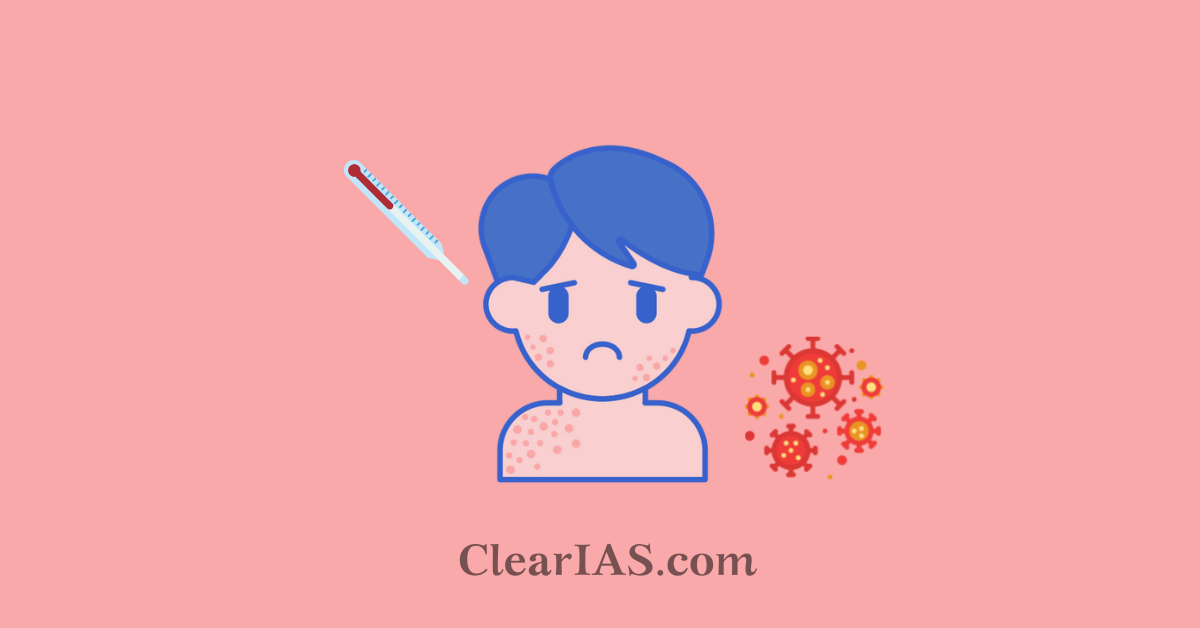
Tomato flu has been reported in a few Indian states. What is this condition, and why is it spreading now? Is there a treatment for tomato flu? How can it be prevented?
Tomato flu has been reported in at least four states Kerala, Tamil Nadu, Haryana, and Odisha.
- The Union Health Ministry has issued a set of guidelines for the prevention, testing, and treatment of the infection.
A study was published in the Lancet Respiratory Medicine reading its epidemiology. The study states that this common and contagious disease generally targets children between one and five years of age and adults with weaker immunity. The disease reportedly affects the mouth, hand, and foot.
It is called ‘Tomato flu/fever’ because of the red and painful blisters that appear throughout and grow gradually to the size of a tomato.
What is tomato flu?
Researchers believe tomato flu is a different clinical presentation of hand-foot-and-mouth disease (HFMD) caused by a group of enteroviruses (viruses transmitted through the intestine).
- The enteroviruses are an ancient and important group of RNA viruses.
- Humans are the only hosts for the enteroviruses (non-polio enteroviruses or NPEV)
Tomato flu or tomato fever is characterized by fever, joint pain, and red, tomato-like rashes usually seen in children below the age of five years. This is accompanied by other symptoms of viral fevers such as diarrhea, dehydration, nausea and vomiting, and fatigue.
The infectious disease is caused by intestinal viruses and is rare in adults as they usually have immune systems strong enough to defend them from the virus.
Hand-foot-and-mouth disease (HFMD)
Hand, foot, and mouth disease (HFMD) is a common infection in children that causes sores called ulcers inside or around their mouth and a rash or blisters on their hands, feet, legs, or buttocks. It can be painful, but it isn’t serious.
It’s not the same thing as foot-and-mouth disease, which comes from a different virus and affects only animals.
Symptoms of tomato flu
- The main signs and symptoms of tomato flu in children are high fever, rashes, and excruciating joint pain, just like chikungunya.
- Additional signs and symptoms are similar to those of other viral diseases like dengue, such as fatigue, nausea, vomiting, diarrhea, dehydration, swelling of the joints, and body aches.
- Patients showing symptoms are made to take molecular and serological tests for diagnosis of Zika virus, chikungunya, and dengue.
Transmission of tomato flu
The experts have not yet found the causes that cultivate or spread tomato flu.
The flu is very contagious with children being the most risk target group.
It is likely to spread through close contact like most viral infections.
The outbreak can spread fast if not controlled and prevented. This may spread to adults with weak immunity as well.
Prevention and treatment
According to experts, the mortality rate in this disease is not high and could be treated easily. Here are some ways to adhere:
- Drink more boiled water, and juices and increase the liquid content
- Avoid touching the blisters
- Maintain good personal hygiene
- Maintain physical distance from suspected cases
- Take sufficient rest to avoid the long-lasting effects of Tomato Flu
The flu is self-limiting, hence there is no specific drug for it.
The known treatment for Tomato flu seems similar to the treatment of Chikungunya and Dengue. Patients are advised to isolate rest, stay hydrated and drink plenty of fluids.
Some drugs that can be used are “Supportive therapy of paracetamol for fever and body ache and other symptomatic treatments are required,” claims the Lancet study.
Way forward
According to the government advisory, anyone with suspected symptoms of tomato flu should stay isolated for 5-7 days since the onset of symptoms.
- It states that children must be educated about the infection and asked not to hug or touch other children with fever or rashes.
- The children should be encouraged to maintain hygiene, stop thumb or finger sucking, and use a handkerchief for a running nose, the advisory states.
- If a child develops symptoms, they should be isolated, their utensils, clothing, and bedding must be regularly sanitized, they must be kept hydrated, and the blisters must be cleaned using warm water, according to the advisory.
- It also states that testing should be conducted to take measures for an outbreak.
- Any respiratory, fecal, or cerebrospinal fluid samples (in cases with encephalitis or inflammation of the brain) have to be collected within 48 hours of illness. The biopsy of the lesions or skin scraping samples does not have such time limits.
Previous year questions
Q. Consider the following statements: (2017)
- In tropical regions, Zika virus disease is transmitted by the same mosquito that transmits dengue.
- Sexual transmission of Zika virus disease is possible.
Which of the statements given above is/are correct?
(a) 1 only
(b) 2 only
(c) Both 1 and 2
(d) Neither 1 nor 2
Ans: (c)






Leave a Reply